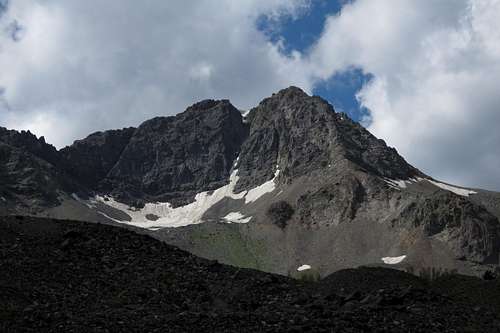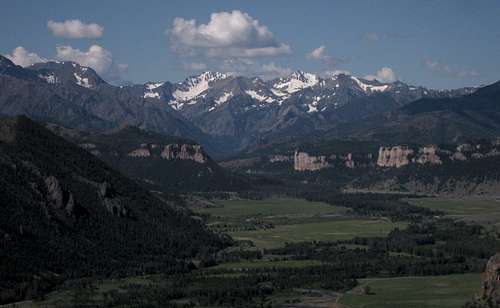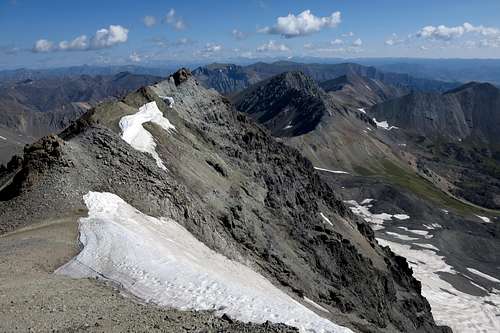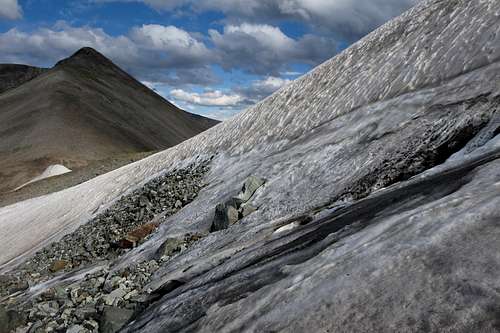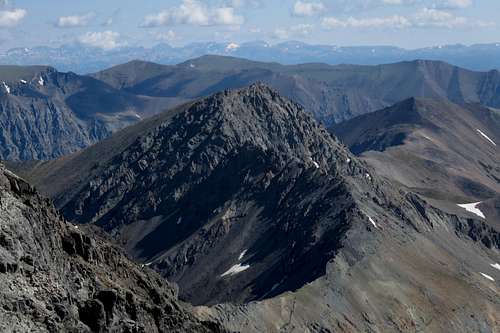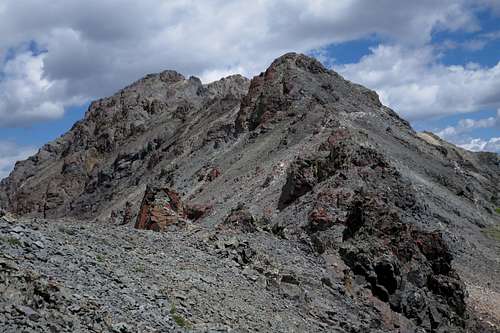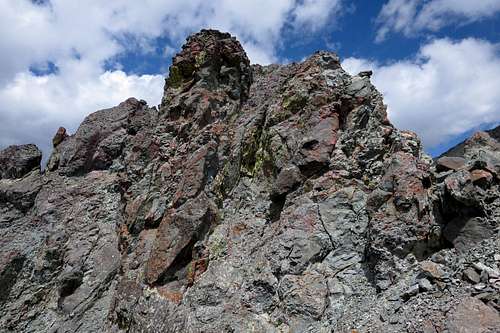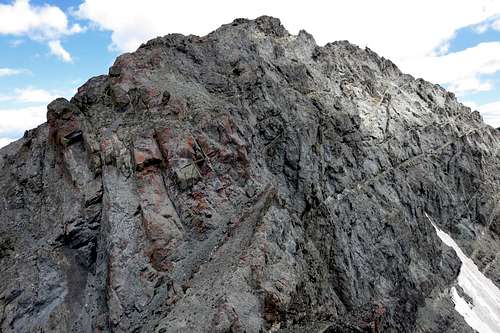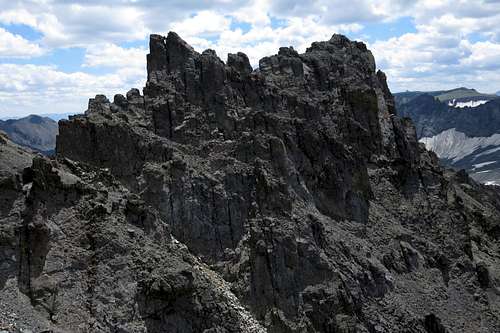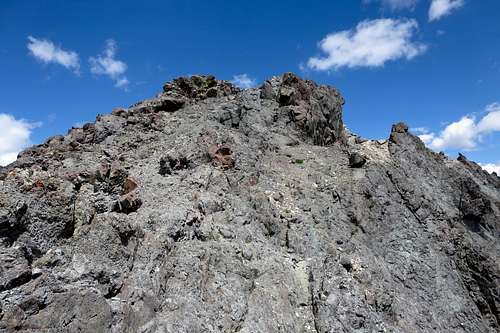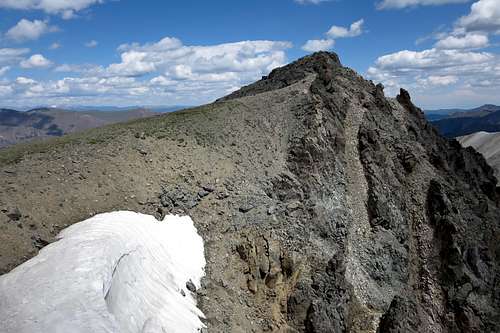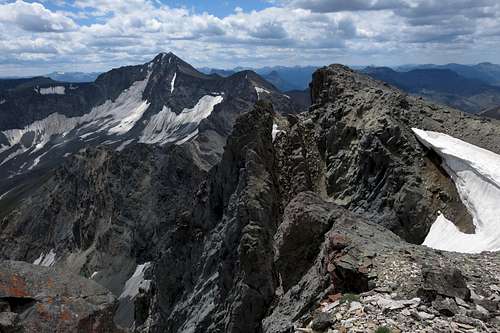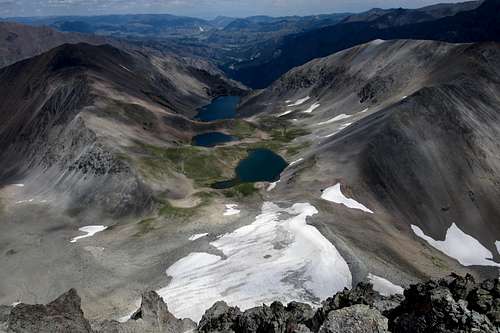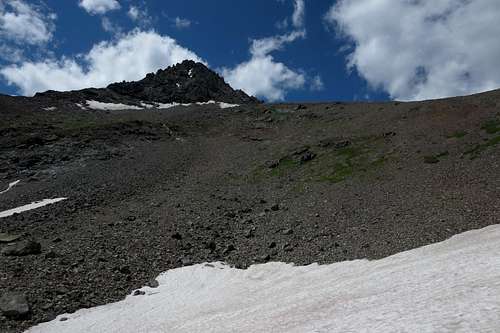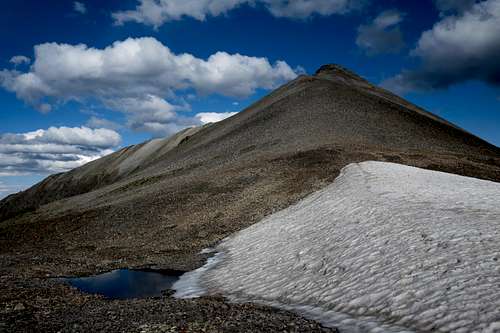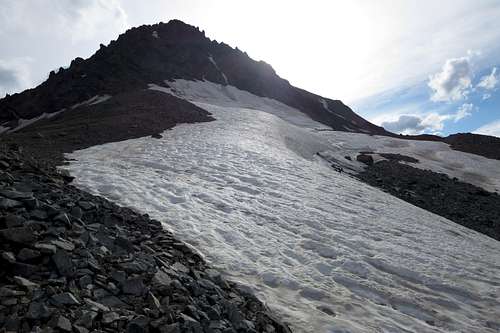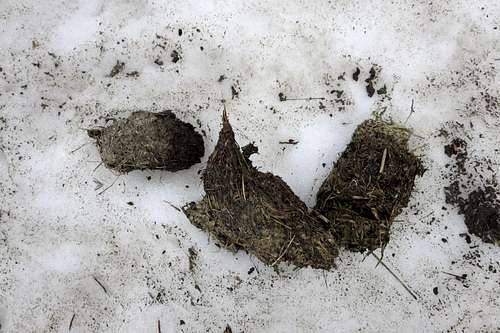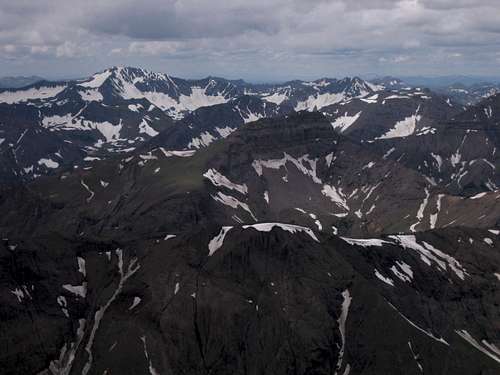-
 12781 Hits
12781 Hits
-
 85.87% Score
85.87% Score
-
 21 Votes
21 Votes
|
|
Mountain/Rock |
|---|---|
|
|
44.63275°N / 109.75643°W |
|
|
Mountaineering |
|
|
Summer |
|
|
11602 ft / 3536 m |
|
|
Overview
One might pass on climbing this peak due to the name, but said one would really be missing out on a fine, challenging, and underappreciated summit. Better for the rest of us, I guess.Getting There
Drive about 20 miles, past where state maintenance ends and the road gets narrower and rougher, to an unbridged crossing of Sunlight Creek. Shortly before this spot, there is a turnoff on the left side.
The easiest route up the peak is probably a Class 2 or 3 one using steep slopes above the Copper Lakes and then the northwest ridge. Life did not put me in a position to climb the peak that way, and I have two other routes to offer here. Neither is easy.
These route descriptions are based on the assumption that you have hiked or driven to the aforementioned camping spot.
Both routes are about two miles one-way and have about 2200' of elevation gain. The first will actually have a bit more than that due to ups and downs.
1: South Ridge-- This is how I climbed the peak. From the notch that is essential to the NE ridge route in Sunlight, I descended a couple hundred feet or so and then traversed over to the saddle between the two peaks. If one only wants to climb Stinkingwater, he or she could reach this saddle from the basin below via steep, loose talus.
Now work the ridge. The closer you get to Stinkingwater Peak, the tougher the ridge gets. For me, the crux was the notch between the ridge and the peak itself; I had to do a precarious downclimb into the notch, drop a bit, and then climb the wall until I got to better holds and easier ground. From there, it was little trouble scrambling to the false summit and then an easy walk to the true summit.
I would put this traverse at Class 4/5. The rock is pretty solid here for the Absarokas, but I would still skip the gear and only do this route if you're okay scrambling this grade on untrustworthy rock.
2: East Face-- This was my descent route, but I will try to describe it as an ascent route. Actually, going up this way would probably be easier than going down it, as it is steep and loose and frequently cliffs out.
Follow the 4wd track until it disappears a few hundred vertical feet below the pass that connects the drainages of the Copper Lakes and Sulphur Creek. Ascend snow and/or talus, or use/game trails if they are visible, to the pass, where there is a view including the glacier, Stinkingwater Peak, and the highest Copper Lake. You may also find a pretty tarn up there. Note to those after ranked peaks: the unnamed peak rising to the east is a ranked peak and appears to be an easy walk-up.
Work your way up the east face to the summit. It is not necessary to cross the glacier, but if you do, have crampons and an axe.
The route up the east face could probably be kept at Class 3 with care, but do it expecting Class 4. And remember that it is loose.
Red Tape
Sunlight Peak is on the border of the North Absaroka Wilderness, but in case you cross over for some reason, the following acts are prohibited in the North Absaroka Wilderness:
- Camping within (50) feet of any trail.
- Grazing livestock at sites posted as closed to livestock grazing.
- Using a campsite or other area with a group exceeding (20) persons and or a combined number of pack and saddle stock exceeding (30) animals.
- Possessing, storing, or transporting food for livestock except for pelletized feed or processed grain (rolled). Cubed hay is authorized only if certified weed seed free by an authorized Federal, State, or County Officer.
- Camping or otherwise occupying a single location for a period exceeding (16) consecutive days.
- Leaving camping equipment unattended for a period greater than 48 hours.


